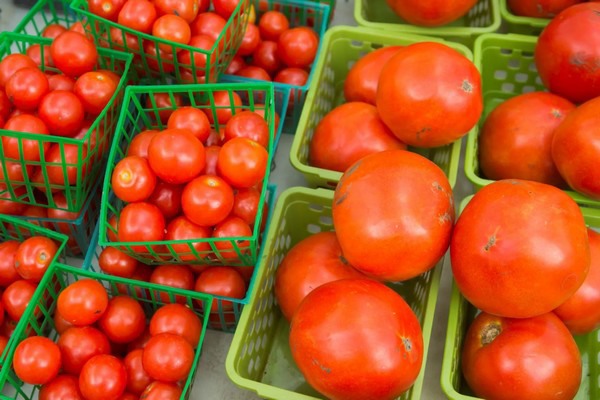Florida scientists received a grant to investigate strategies to control bacterial spot in tomatoes. The disease creates major challenges for commercial production throughout Florida and across the United States.
Bacterial spot first affects the leaves of the plant, developing black spots the size of shotgun pellets. Then the leaves blacken and ultimately drop. The fruit is still edible but can develop little blisters, making them practically unmarketable.
The plant pathogen that causes bacterial spot in the southeast is called Xanthomonas euvesicatoria pv. perforans. The "pv." abbreviation stands for "pathovar" and is used to designate a specialized group of bacteria with the same or similar characteristics within a species.

Courtesy UF/IFAS
Gary Vallad, professor of Plant Pathology at the University of Florida's Gulf Coast Research and Education Center in Balm, said the pathogen has been problematic for the tomato industry since the early 1990s because it has developed a tolerance to copper-based pesticides, typically used for managing bacterial diseases.
"This pretty much limited the usefulness of copper, and without using other types of antibiotics, which we don't use in the field, it's really hard to manage this disease," he said.
Hard to peel, hard to process
Other variations of the bacteria can also cause really large lesions, "which makes the tomato hard to peel mechanically, so processors don't like that either, so that becomes a loss for them as well," Vallad said.
That means the tomatoes can't be canned or used for products like ketchup. There's much that is unknown about the pathogen, Vallad said.
"A lot of that has been limited by our ability to differentiate strains of the bacterium. So, there's been a lot of recent advances in our tools to be able to discriminate between different species based on sequencing of the pathogen's genome," he said.
"We can't just look at the bacteria and say, 'this is Bacteria A, and this is Bacteria B.' This is what we kind of refer to as almost like cryptic species … they all look the same, so we have to actually … use molecular tools to really be able to differentiate between different strains."
Vallad said he's now interested in breeding a tomato with more resistance to the bacteria.
"We need to have a better understanding of the composition of that population, so breeders can actually identify resistance within a tomato that will actually cover all the strains or most of the strains," he said. They also want to trace the movement of the strains throughout tomato production.
"We know different areas we can always find the bacteria, but we don't know if the bacteria is exactly the same at every point," Vallad said. "So, we're trying to understand, to really look at the movement of the of these strains throughout the production system so we can find where in the production system is the best place to manage them."
Xanthomonas euvesicatoria pv. perforans is also prominent bacterial species threatening tomatoes in the Midwest, Great Lakes, Northeast, and in neighboring areas of Canada, along with Xanthomonas hortorum pv. gardneri.
Thanks to $5.8 million from the National Institute of Food and Agriculture, Vallad and his team of scientists across Florida and the U.S. will spend the next four years identifying and understanding the different strains of the pathogen to help tomato growers and breeders manage the bacterial spot disease more successfully.
"These types of advancements are not just in this particular disease. It's really impacting a number of plant diseases, animal diseases and human diseases," Vallad said. "The exact same technology that was used to understand the COVID virus, we're using to understand this particular pathogen on tomato.
"And this group of pathogens impact a number of other crops, not just tomato … Other Xanthomonas affect almost every crop we grow in the world. There is a Xanthomonas that can cause disease on it. So, understanding this group of organisms, tomato can be used as a model for other researchers for other crops as well."
For more information:
WUSF News
www.wusf.usf.edu
